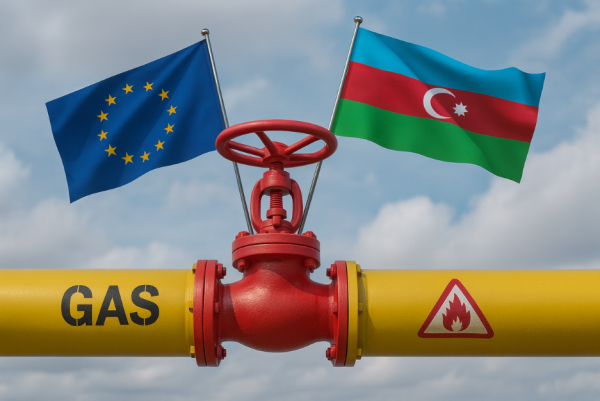The impact of COVID-19 on Azerbaijan in five charts

Photo: Baku`s central street without usual crowds and businesses. December, 2020. JAM-News
Before the COVID-19 pandemic, Azerbaijan looked forward to the third consecutive positive annual growth rate, as the economy continued its recovery from the 2015-16 banking and currency crisis. However, the health and economic fallout of the pandemic took its toll on the economy of Azerbaijan. Lockdowns, business closures, and other measures had negative impact on both supply and demand sides of the economy. Much has been told and discussed on the pandemic`s economic implications. This article illustrates some of the economic impacts of the pandemic on Azerbaijan`s economy through 5 charts.
1. Correlation between lockdown severity and output
The October edition of World Economic Outlook by IMF illustrates a clear negative correlation between the stringency of the lockdown measures and the decline in real GDP growth relative to pre-pandemic forecast. The figure illustrates that countries that implemented more stringent lockdowns experienced sharper GDP contractions. The study relies on Using a composite measure based on the Coronavirus Government Response Tracker of the University of Oxford. This is a composite measure based on nine response indicators including school closures, workplace closures, and travel bans, rescaled to a value from 0 to 100 (100 = strictest).
Figure 1 illustrates that the negative association between lockdowns and economic activity is also valid for Azerbaijan. Although the number of observations is not adequate to conduct regression analysis, simple descriptive statistics suggest that there was a negative relationship between severity of the lockdown measures and output. In other words, lockdown measures were associated with lower economic activity.
Figure 1. The correlation between the average lockdown stringency and the GDP growth
(Source: SSC, University of Oxford, author’s calculations)
2. Sharp decline in output
Following a 2.2 percent real GDP growth in 2019, Azerbaijan’s economy was set to record another solid growth rate in 2020. The forecasts of the IMF, World Bank, as well as the Ministry of Economy of Azerbaijan stood between 2 to 3 percent before the pandemic. However, as the coronavirus spread across the country, the government was quick to introduce containment measures leading to negative aggregate demand shock, as well as disruptions to supply chains. As a result, all institutions had to revise their GDP forecasts down. Pre-March average of real GDP forecast for 2020 was 2.6 percent, while average of post-pandemic forecasts was a contraction of 3 percent in 2020.
Figure 2. Post pandemic economic growth forecasts are substantially lower
(Source: Ministry of Economy, WB, IMF)
3. Falling confidence across the real sector
Reflecting the subdued economic environment over past months and uncertainty about the future, confidence indices have dropped substantially across the real sector. The confidence index is based on the survey conducted by the Central Bank of Azerbaijan and reflects business expectations on economic activity, including production, inventory and expectations about price and employment. The closer the index to 100, the higher the confidence in particular sector. On opposite, a reding of -100 stands for the lowest confidence.
Figure 3. Confidence indicator in sectors of the economy (Source: Central Bank of Azerbaijan)
Figures above show that since the start of the pandemic (the shaded area corresponds to the period since quarantine measures were put in place), confidence across industry, construction, retail and services went down. All sectors excluding services started showing a glimpse of hope towards the Fall 2020. However, with the number of infections reaching all-time highs in November and early December, the confidence is likely to be negatively affected in coming months.
4. Remittances
A large number of households, particularly in rural areas, rely on remittances from overseas for their living expenses. In 2019, the share of remittances to GDP stood at 2.6 percent, which translated into USD 1.2 billion. A large share of these remittances comes from the Russian Federation, where almost 1 million Azerbaijani migrants reside.
The 2020 study by the World Bank estimates a 20 percent drop in the flow of international remittance as a result of the pandemic. However, total remittances inflow into Azerbaijan during the first nine months of 2020 reduced only 2 percent compared to the same period of 2018. In this regard, remittances from Russia is an exception. It edged lower by USD 80 million in 2020, recording a drop of 17 percent year-on-year.
Figure 4. Remittances inflow into Azerbaijan, year-on-year comparison for first nine months of 2020
(Source: Ministry of Economy, WB, IMF)
5. Weakening external sector
The global economic downturn resulted in reduced demand for Azerbaijani exports, mainly hydrocarbon products. Azerbaijan’s major export partner, Italy, was among the hardest hit countries by Covid-19. In addition, the collapse of oil prices has substantially affected the value of Azerbaijani exports. As a result, during the first nine months of 2020, trade balance deteriorated. However, lower export receipts were partially compensated by lower imports, a policy coined “import compression”. In general, the level of imports tends to be affected by oil prices (Figure 5b).
Figure 5a. Trade balance, USD million Figure 5b. Imports (USD million) and oil prices (USD per barrel)
(Source: State Customs Committee) (Source: State Customs Committee, IMF Primary Commodity Prices)







